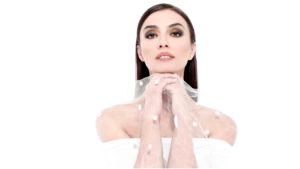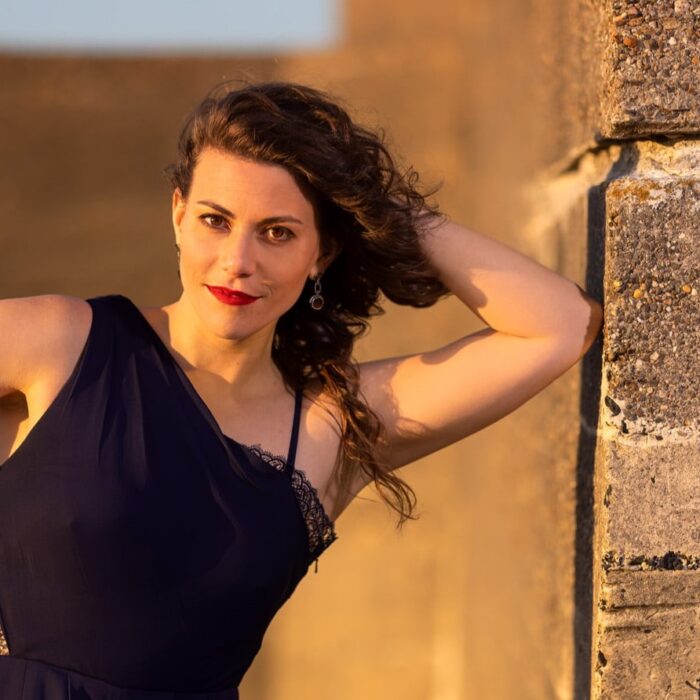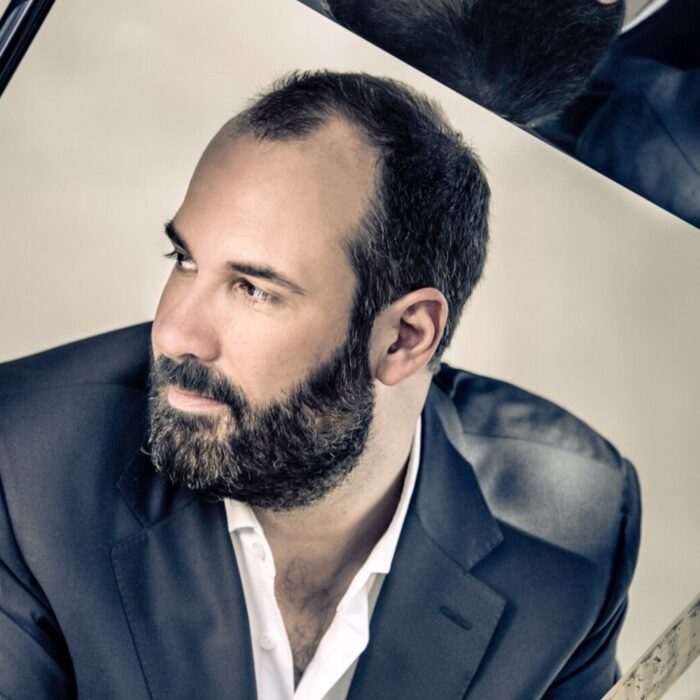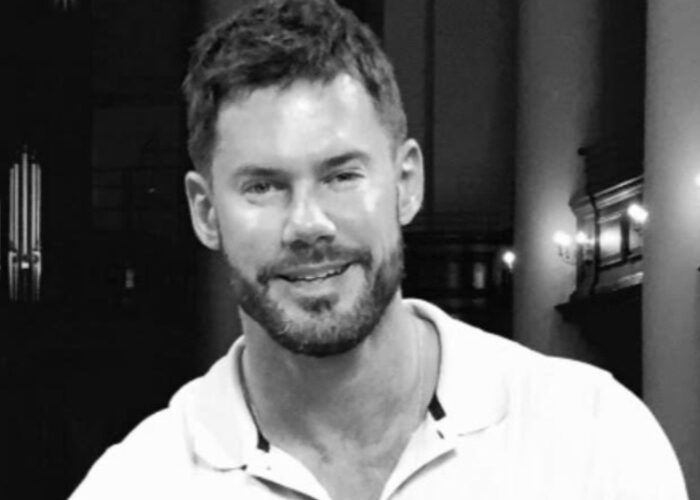
Q & A: Soprano Ermonela Jaho On ‘La Traviata,’ ‘La Rondine” & Developing Her Voice
By Francisco SalazarIt takes years for an artist to reach his or her “peak.” Years of constant work, precision, and experience are some of the keys to finding yourself fulfilling the dreams that you initially set out to conquer. And in some cases, that might not be enough.
Soprano Ermonela Jaho has been performing around the opera world for over 25 years and over the course of the last few years, she has seen her career undergo a transformation. While she was always an active performer, now she is a full-fledged opera star, getting a chance to showcase her artistry on the biggest stages and in the most challenging roles.
Not only is she now one of the most sought after “Madama Butterfly” interpreters in the world, but her Violetta in “La Traviata” at the Royal Opera House, Covent Garden this past January was widely regarded as one of the greatest performances of the season. Her work has been described as “captivating,” “heartbreaking,” “triumphant” and “enchanting to name a few.”
And she’s felt the shift in an essential way.
“Everything is connected to our body, our nerves, and our muscles. I feel different and it makes it exciting for me,” Jaho said in a recent interview with OperaWire in which she related her recent projects and those that are incoming.
OperaWire: You recently returned to the Covent Garden For “La Traviata,” a production that you have performed numerous times. What makes the Covent Garden so special and what was different this time around?
Ermonela Jaho: I have a special connection with London because it was my debut with this “Traviata.” I feel happy and proud that 11 years after I can still sing this same production. “La Traviata ” is not an easy role and with age, you have to take it easier. The coloratura is challenging and going back to the role, I realize I can still do it and deliver.
The Covent Garden is family and it’s beautiful that I am singing this production for the fifth time. Every time it’s different and you find a new way to sing it so that it feels fresh. We change every day and the same thing happens with the production and with our job.
OW: Having performed this production so many times, what types of things did you discover this time around?
EJ: You appreciate this production more when you sing in different opera houses and you see how everything has changed. When we do modern or other lush productions, you realize they don’t give that type of simplicity. Coming back to this production you dream because it’s so simple but elegant. It might have been in a different time period but human emotion does not change. Sometimes it’s beautiful to go to the opera house and dream. This production does that because of the dresses and the movements. You can project your feelings and I love it.
OW: Were you able to work with Richard Eyre during this run?
EJ: It was the first time that Richard Eyre came. We worked with him during our last rehearsal and he was happy. He was very surprised that after 25 years the production still worked. I was flattered because he complimented my singing and my acting.
OW: You’ve worked with Plácido Domingo on several occasions. Can you tell me what the experience was like and what he brings to the music?
EJ: Maestro Domingo is fantastic. We did “La Traviata” in Orange and you forget he is Maestro Domingo because he is an artist. He does his job singing in full voice in the morning and is disciplined. He helps you and he gives us energy so it becomes real. If you are not committed, it will not be believable. He has this kind of energy and when we started rehearsals we were both in tears. You see this heart and soul which is genuine and it is beautiful. As an artist, I love working with him because you feel like a better artist and the result is always great.
OW: The Royal Opera performance was recorded Live in Cinemas. Can you tell me what the experience is like and how does it affect your performance?
EJ: When I did it for the first time I freaked out. It was in my mind and you feel like everyone sees your weaknesses because we judge ourselves so much. We are vulnerable but step by step I realized how beautiful it was. It helped me so much because I like all the details. Certain expressions are seen that you can’t see in the theater. Of course in the theater the energy of being live is important but when you have the big opera houses, certain details are lost. With the camera in your face, you can give those details and feel free. But it is a big challenge because you can’t only think about the voice or the notes. You also have to think of everything as an artist. You have to give more and focus on everything you do. More importantly, it gives everyone the opportunity to go to the opera. In the end, opera speaks to everyone and it is important to have everyone be able to see it.
OW: You have performed Violetta more than 260 times and this season you’ll also be doing the role at the Berlin State Opera. What are some of your favorite moments in the work?
EJ: I love the whole opera. I have sung this over 260 times and every time I think of the moments I didn’t pay attention to the previous time. Every time I find different moments that I didn’t understand before. I love “Addio del passato,” “Dite alla giovane,” the first part of “E strano, E strano,” and “Amami Alfredo.” I want to have the biggest voice in the world during “Amami Alfredo” because it’s like your soul is opening and it wants to fly out into the house. Another part is the final moments because every part of the music is unbelievable and I always want to go back and find a new detail in the music and in the text. In Verdi, I get emotional and lose control, crying and screaming.
OW: How would you say your interpretation has changed over the years?
EJ: Life experience has influenced a lot of my interpretation. When I started singing Violetta, I wanted to show that I could sing everything in full voice. I remember that when I finished I was exhausted. And when I see that performance I feel exhausted and that was only watching it. Now it’s different and you have to highlight. It’s three hours and you have to be an architect. You have to give, in three hours, the life of this wonderful woman. And it is your duty as an artist to highlight these moments.
I am also conscious now and know what it is needed. I went beyond it and I’m not only trying to show off. I’m trying to show an interpretation that the audience can feel moved and connected to. It’s more intimate and mature and I’m trying to find more colors and when she is dying I try to make my voice more like “Voce Bianca” because you’re weak and you cannot pretend. In “Dite alla giovane,” you have to show her strength, and I change my sound. I sing piano but with a desperate color. There are certain colors that I feel the energy from the orchestra and the audience. The dead silence allows me to be more conscious and allows me to give more to the voice.
OW: You are also performing Magda in “La Rondine.” These two roles have been compared over the years. Tell me what are the similarities and differences between the two?
EJ: They are very similar because Magda, like Violetta, is a beautiful lady. They both want to have everything and if Violetta dies at the end, Magda dies in her soul. Her inside dies and I realized that when I sang it. When I first sang the role I remember that last note, I sang it and it was like dying inside and it was a death in many ways. I sang it piano but it was more than a piano.
Musically they are completely different. Puccini in “La Rondine” shows a little bit of “Madama Butterfly,” “La Fanciulla del West” and as a drama is more direct. In Verdi, he prepares the situation. Vocally both are similar but Violetta is more complete because you have the coloratura and it’s more in the bel canto direction.
OW: Which of the two roles fit better for your voice?
EJ: Bel Canto came before Verismo and it is helpful but it depends on how you sing it and how far you go. Puccini can be healthy too. When I first sang “Butterfly,” everyone told me I was going to kill my voice, but if you open the score, you see how Puccini was careful with the voice and the number of colors he gave. Butterfly has pianissimos and you have to give delicacy to the character. If you start screaming from the beginning you won’t be able to survive, regardless of the voice. It depends on how far you can go and be smart. You have to know your limits and be at the edge without falling down. So I can’t say who’s better because it depends on what you do. You have to find the balance and go to the character and see what it requires. I can sing “Madama Butterfly” and “La Traviata” because they are for lyrics.
OW: “La Rondine” is described as “Lighter Puccini.” Would you say that is the case or is that simply because it has some lighter moments?
EJ: It is not “Lighter Puccini.” Yes, Magda is a little lighter, but the second act is not easy because the tessitura is so low and you have to go up. He doesn’t forgive. The third act is Puccini with his drama and the one we know from “Tosca” and “Manon Lescaut.” I love this act and the more I sing it, the more I love it. It’s still a dream for me. The last duet is emotional and beautiful musically. Puccini says, “Here I am. Now sing me.”
In the end, it’s a mix. “La Rondine” is called operetta but it’s not operetta. It’s Puccini with a touch of lightness.
OW: You are very specific with the roles you choose. What goes into your choices and what have you learned over the years from the operas you sing?
EJ: When I am proposed certain roles, I know how far I can go. I see what the roles contain. I am also very careful that if I have to sing “La Traviata,” I can sing “Madama Butterfly” after. But if I sing “Butterfly,” I cannot sing “Traviata” after. It takes another way of singing. In “Traviata,” you need a lighter voice and you have to change certain things. If I have to sing “Anna Bolena,” no way I will sing “Butterfly” afterward. The opposite could work. I need a week to 10 days to switch. I learned this the hard way.
Once I sang Desdemona in “Otello” and immediately I sang “Suor Angelica” and I did it in between performances and I was really worried because I couldn’t sing “Suor Angelica” anymore. Yes, you can but I didn’t find the freedom like before. It was a warning that if I sing the same way you sing Desdemona, it does not work. I am very careful about how my body and vocal cords respond and with experience, you know exactly how far you can go. It’s different when you approach a certain repertoire. You need that break and it needs more work to go back to verismo.


